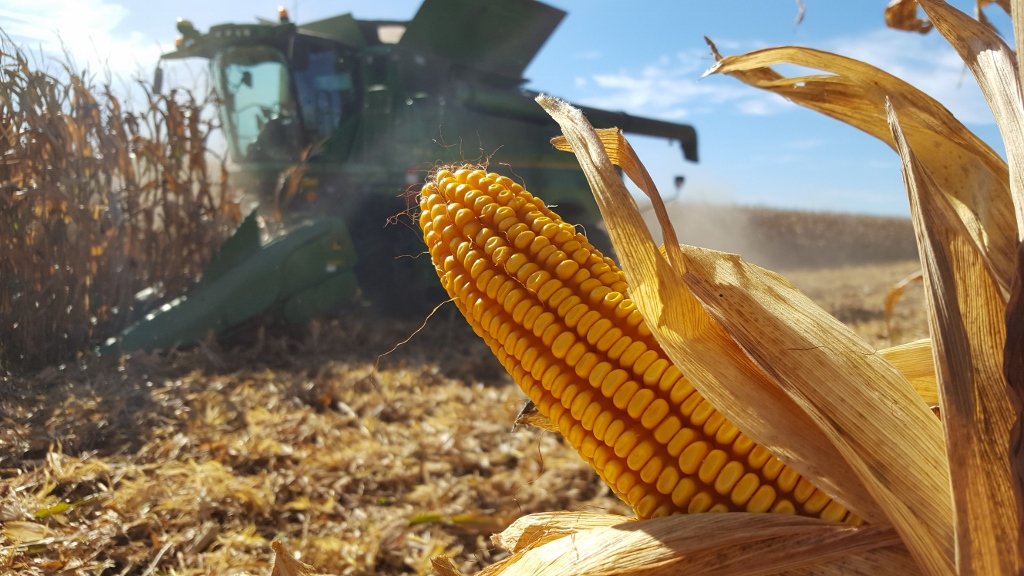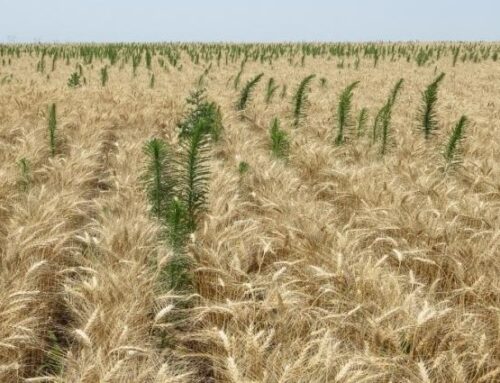
Nitrogen (N), phosphorus (P) and potassium (K) are the big guns of crop nutrients.
Still, micronutrients—such as zinc for corn and manganese for soybeans—may be worth a checkup. If you farm in an area prone to micronutrient deficiencies, they may be limiting your yields.
Why Deficiencies Are Surfacing
Blame anti-pollution laws for some of the sulfur deficiencies that have surfaced in corn. These laws work. It used to be you’d get free atmospheric sulfur. No more. There are now cases where sulfur applications are needed to curb deficiencies. Ditto for zinc deficiencies in corn and manganese deficiencies in soybeans, says Mark Goodwin, research coordinator for Wolf Trax, a Winnipeg, Manitoba, plant nutrition company. “It used to be that with macros (N, P and K fertilizers), you’d also get incidental amounts of zinc and manganese,” he says. “But as production processes got better, they (macronutrient fertilizer products) got more pure.”
Ever heard the saying, ‘More horses need more hay?’” It’s the same way with crop inputs that accompany higher yield goals, says Goodwin. One example is boosting corn populations over time from 25,000 plants per acre to over 40,000 plants per acre. “There are many advantages in increasing the stand density, but the side effect is that you are taxing the reservoir of micronutrients in the soil,” says Goodwin. “A yield goal of 280 bushels per acre vs. 150 has a greater need for micronutrients.” Certain geographies are more prone to micronutrient deficiencies than others. “In northern Illinois, the probability of having low numbers for zinc is rare,” says Paul Reising, sales manager for Wolf Trax. “In southern Illinois, though, there are more Issues with zinc deficiencies, with plants not growing.”
Ditto for certain soils. “Some soils just plain have a difficult time yielding micronutrients to the crop,’ says Goodwin. Just because you farm a high pH soil doesn’t necessarily mean you will have micronutrient deficiencies. Still, it can be an indicator. “There might be zinc in soils, but if the pH is 8.1, it can prevent zinc from getting to the crop,” says Goodwin. Low organic matter soils can also be prone to micronutrient deficiencies. “In some areas like Washington state, there can be a double whammy of high pH and low organic matter soils,” he adds.
Hitching a Ride
Historically, the challenge to micronutrient applications is ensuring plants can readily access them. For example, a 5 pounds per acre application of active ingredient zinc contained in 35% zinc sulfate granules is heavily concentrated. Distant spacing between granules in a field makes it difficult for plants to access zinc. Wolf Trax developed DDP (dry dispersible powder) micronutrient products that are coated on macronutrient granules, such as dry urea.
“They hitch a ride with the micronutrients,” says Goodwin.
In the case of Zinc DDP that coats DAP (18-46-0) granules, this puts zinc on more granules across the field. “There is a good chance of plants intercepting micronutrients as they feed off the DAP,” says Goodwin. Each DDP product contains two active ingredients for each micronutrient. This creates a one-two micronutrient punch. Norton explains that plants initially get a blast of a micronutrient, followed by a slower-releasing one that spreads micronutrient release over the growing season. This helps ensure that plants may access the micronutrient over more of the growing season. The company currently markets nine DDP products that include micronutrients like zinc, copper, manganese, boron, iron, calcium, and magnesium. These products are applied to the fertilizer blend by retailers.
Soil Tests Are Best
Soil tests are a key way to diagnose micronutrient deficiencies. Tissue testing can also reveal micronutrient deficiencies, but at that time, it’s a post mortem diagnosis of a malady that’s already clipped yield potential. Two philosophies exist for micronutrient applications, says Norton. One philosophy adds enough micronutrients for the current year. Another is to apply large amounts to last several years.
If they are needed, Wolf Trax officials recommend annual applications. Certain soil conditions, such as high pH soils, can lock up micronutrients in subsequent years. Annual applications also mirror the reality that most farmers today rent rather than own their land. A multi-year micronutrient application is lost money if they lose the land. “In the 70s and 80s, more farmers owned their farmland,” says Reising. “Now, they rent more. Farming land year by year creates different dynamics.”
Other Products
Wolf Trax markets a seed-applied product called Protinus that coats the seed with micronutrients like zinc, manganese, and iron. This seed-applied product is used on crops that include corn, cereals, canola, and soybeans. WolfTrax officials say these nutrients become immediately available to seedlings following germination. This gives seedlings a ready source of nutrients like iron, zinc, and manganese before plants can access these on their own from the soil. It’s also formulated to optimize pH in the microzone surrounding the seed.
In 2014, Wolf Trax plans a limited launch of Nu-Trax P on a limited basis. This uses the same granule-coating technology as in its DDP micronutrient lineup, only for P. The push toward earlier planting in cold soils make it difficult for plants to easily access P, says Goodwin. You see this early on in the form of purple corn plants. In time, warmer conditions can enable corn to push past the early purpling. “But seed-placed P will help the plant get out of the ground faster,” says Goodwin. “It is well accepted that early P (uptake) helps with early stand establishment.”
Read the original article here – https://www.agriculture.com/crops/corn/production/micronutrient-checkup_137-ar35635




